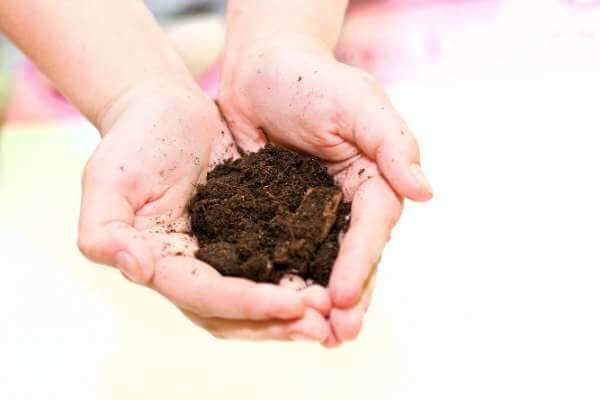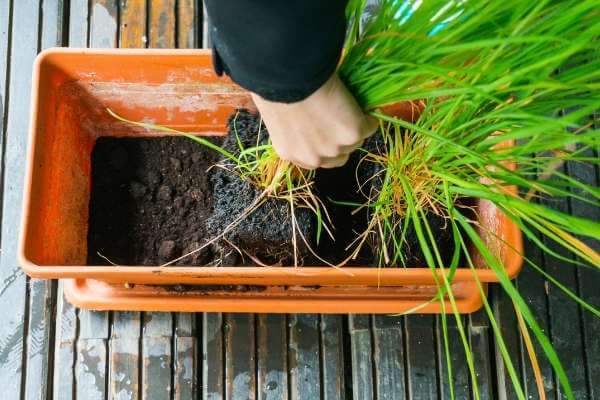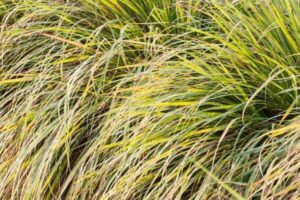Recently, I grew some lemongrass plants in my garden. In the beginning, I could have good results. But in time that turned upside down and my lemongrass leaves tend to turn brown. So I’ve researched why is my lemongrass turning brown?
And I think that is also timely to your garden right now.
Lemongrass usually turning brown because they are not getting enough water and not being well fertilized. Lemongrass likes to be grown in areas with high rainfall, humidity and healthy soil. If watering and fertilizing isn’t the reason for this matter, your lemongrass is turning brown because of a fungal disease.
If your lemongrass plants suffering from the turning brown disease, don’t worry you are still on the game.
I’ve packed this article full of data on this topic and some additional information you’ll need. It’s time to save our lemongrass plants. Keep reading!
Table of Contents
why is my lemongrass turning brown?
As to the above explanation, there are three main reasons why is your lemongrass plant is turning brown.
#1 Water
Lemongrass plants need consistent watering conditions if you are not living in a southern – eastern country.
Because they are natively growing in southern countries like India and Sri Lanka.
Those areas have good rainfall, humidity and no troubles to plants with winter or seasonal errors. Often they drink water organically from the rainfall and they can survive the warm periods themselves.
But when we consider the areas out of those countries, lemongrass plants required good strength and energy to provide more leaves on the plant.
So, Europeans, Americans should have extra care with their lemongrass plants in the garden when they watering.
But, it doesn’t mean you have to flood the plant with water. Because on the other hand lemongrass needs well-drained soil.
There is a little trick you can use to get rid of these watering issues with lemongrass which directly affects turning lemongrass brown.
Here is it.
First, spray the water around the tree and try to keep humidity, friendly to your lemongrass plant. You should do this consistently every 4 hours in the day time.
And as the second step, bury a clay pot filled with water under the plant. This step is commonly used by gardeners in south Asian countries.
It will help the roots by cooling them over time.
This two-step process will definitely help gardeners, as same as the way that it helped me.
So if you try this when you watering your garden, you don’t need to be frustrated again, “why is my lemongrass turning brown?”
#2 Fertilizing

If your lemongrass plant is about to die or turning brown, you may be missed a big part of the game which is fertilizing.
Lemongrass like notorious , Ph neutral and drained soil.
Once they have fulfilled these requirements on their soil naturally, they wouldn’t expect fertilizing.
That’s why Indian gardeners not putting too much effort into growing lemongrass.
So first you need to identify the type of your soil. This guide will help you with that.
Then you have to fertilize the soil of your lemongrass plant, to be turned into a neutral Ph level.
Actually, they like if the Ph level is around 6.5 – 7.0.
So if the soil is too acidic, you can use some alkaline fertilizers such as Epsom salt.
When the soil is more alkaline, many gardeners use a Nitrogen-based fertilizer to treat their lemongrass plants.
Also if the soil is too alkaline, you can use a homemade fertilize like pure compost to make it closer to the neutral Ph level.
Always remember this quote as a gardener.
Healthy soil is an investment for a healthy plant
Again I need to remember you that, fertilizing is very important, especially if the plant you’re growing is non-native.
So if you being careful with fertilizing, it will be a great push to getting rid of lemongrass leaves turning brown in your garden.
#3 Fungal diseases
If you are a gardener that really being careful with above two facts, and frustrating about “why is my lemongrass turning brown?”, your plants definitely being hit by a fungal disease.
This will happen because rust affected your plant called Puccinia Nakanishikii.
Firstly, this fungal attack was founded from the lemongrass plants in Hawaii1985.
When this happens to your plant, lemongrass leaves turning brown with yellow spots, some leaves turning completely yellow. And both sides of the leaf will be damaged from this attack.
The dangerous thing is if the damage is severe, leaves could be die and eventually the plant also.
Also, the rust spores of this fungus can be lived even in the leaves that had been cut from the lemongrass tree.
So don’t use them anywhere else in your garden until you throw them into the fire.
How to revive lemongrass after turning brown?
Now you are well noticed about why is your lemongrass plant turning brown.
If there is any kind of way that you can revive your lemongrass plant?
The short answer is yes.
There are some steps that you can use to get your lemongrass back. But no one can guarantee 100% especially if you out of the zone that this plant grows natively.
complete process to revive a lemongrass plant that turned brown

As the first step of reviving your lemongrass plant is removing or cutting the browned and drooping leaves.
That will support the lemongrass plant to grow new leaves.
Here’s the way you should do it.
#1. Take a sharp scissor or a sharp knife.
#2. Then move it to the brown leaves and cut them as short as 3 cm left.
Don’t worry if you cut them too shorter. Your Cymbopogon plant knows how it can grow back its leaves.
#3. The important part!
After you cut down the browned leaves of our lemongrass plant, don’t even let those leaves to lie on the soil.
As to our discussion above, if your lemongrass turned brown because of a fungal disease, fungi spores can move to elsewhere it touches.
Throw all the debris into the fire.
#4. Divide your lemongrass plant into three or four seedlings.
You should do this based on the size of your lemongrass bush. But don’t worry if it looks too small because you cat unwanted leaves.
Our magic can produce 10x more leaves than your old lemongrass plant!
#5. Then wash them well and keep for nearly two hours.
#6. Now plant each of those lemongrass seedlings in separate places. It’s better if you don’t plant them all as a bush.
Also, remember that you should plant them in a location that they have enough area to grow their roots.
If you are willing to replant your lemongrass plant indoor, the least recommend is a 5-gallon basket.
You are going to do much better with your lemongrass plant if you plant them in an outdoor location that getting enough sunlight.
And if you prefer growing these Cymbopogon plants indoors, keep them near a window.
#7. After you finished the job, washout all the accessories you used and keep them under direct sunlight for 2 hours.
I’m not saying you to do this just as a good habit.
If the pieces of equipment did any of contacting with fungal sections, you are going to spread it all over your garden once you use them for next time.
If you are following the above steps when you replanting your lemongrass plant to revive it for next season, you are on the correct track.
Also, the results are better if you avoid the reasons that caused to lemongrass turning brown that I mentioned at the beginning of this post.
Lemongrass F&Q that may helpful for hardeners
Gardeners are not only worrying about “why is my lemongrass turning brown?”
There are some more problems and diseases with lemongrass that can make gardeners frustrated.
Why is my lemongrass leaves turning yellow?

This error can often be seen among new non-experienced gardeners.
If your lemongrass leaves turning yellow, your plant is having a bad experience with overwatering.
Once your Cymbopogon plant leaves turn yellow, the best thing you can do is waiting until the soil is drained well.
And for further watering, you have to follow your own schedule on watering your lemongrass bushes.
You can easily check the moisture of the soil from your finger.
This disease couldn’t be dangerous and harmful like lemongrass leaves turning brown, but if you keep doing this bad habit, eventually the lemongrass plant can die.
What is the reason to lemongrass are droopy?
If your lemongrass plant looks sadly and droopy, it’s getting a worse feeling with too drained and dried soil.
This disease aware you about lemongrass plants can be sick when you don’t water them necessarily, while they feeling bad with overwatering.
Does lemongrass come back each year after turning brown?
Most of the time lemongrass starts dormancy whenever it’s lower than 8 C.
But could lemongrass comeback after year?
Really it’s still possible. You can’t expect any new leaves during your lemongrass plant spending the hardness of winter.
But the plant is still alive. It can provide new leaves after the temperature is friendly with it.
If you growing your lemongrass plant in a pot, you can overwinter your Cymbopogon plant easily even the leaves turned brown.
Just plant it indoors while following the process I had mentioned on how to revive a lemongrass plant.
You can read the post from hunker.com, which is fully detailed about, “is lemongrass annuals or perennial?” from here.
How to manage watering when lemongrass leaves turning brown?
Already I informed you abut you should be more careful about watering lemongrass especially if you are in a non-native country.
But this will be changed when leaves turning brown. You have to despite the zone you are living in for a while.
If a fungus caused the disease of the plant, careless watering can spread that fungal disease throughout your garden.
So instead of flooding the water to your lemongrass plant, just spray them only the roots and leaves.
Here’s a nice idea you can practise when growing lemongrass plants.
Grow your next lemongrass plant in a bottomless 5-gallon basket in your garden.
But don’t plant it in the container. Only use it as a cover.
Then, if the lemongrass turned brown because of a fungal disease, water won’t spread throughout the garden unnecessarily.
Conclusion
Why is my lemongrass turning brown?
There are three main factors that affect to turn brown of your Cymbopogon plant.
- Water
- Fertilizing
- Fungal diseases
If you ale to provide these 3 kinds of needings to your lemongrass necessarily, your Cymbopogon will never be going to be sick or sad.
After your lemongrass plant leaves turned brown, still you can revive your plant by using my 7 step process.
Also growing lemongrass in pots indoor is a great idea if you have not space left in your garden.
